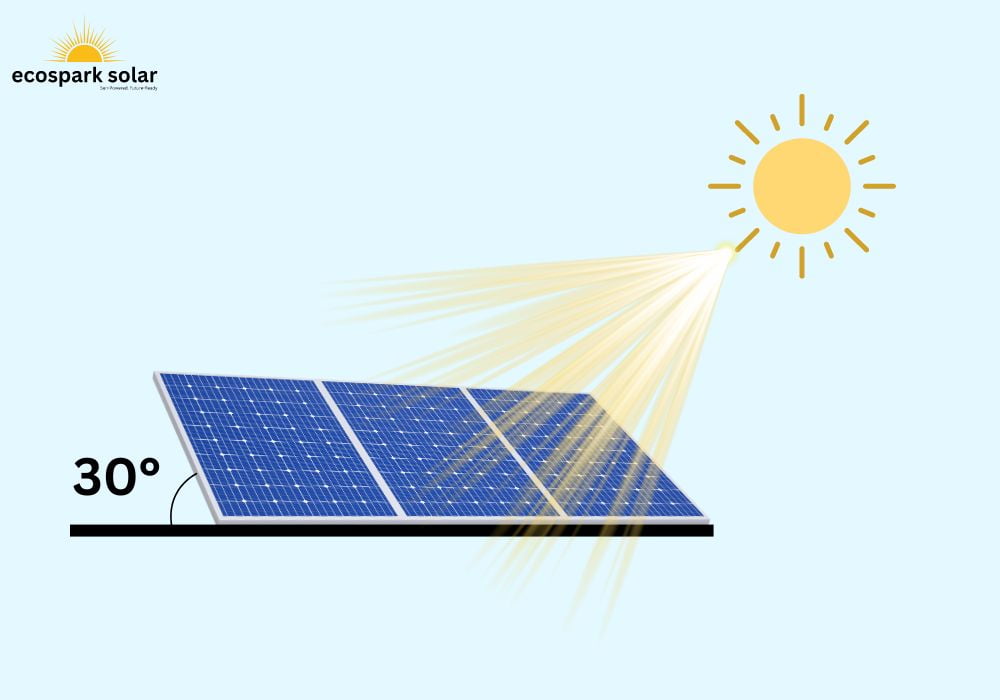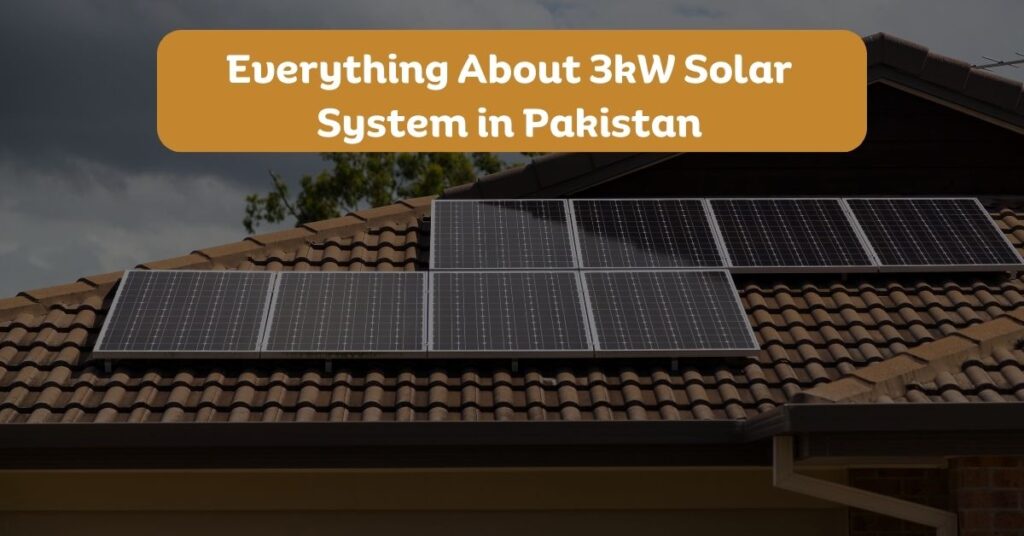Pakistan possesses tremendous solar power potential due to its geographical location and climate. The country receives an average of 4-8 kWh/m² of solar irradiation per day, making it ideal for solar energy harnessing. In comparison to other regions or countries, Pakistan’s solar potential is comparable to solar-rich areas like the Middle East and parts of Africa.
So, if you want to install a solar panel system, it is natural to ask: How much power does one solar panels produce? And since the potential of solar energy varies from location to location, you would like to know much power solar panels produce in Pakistan. Once you know that, you can easily size your system. So, let’s get to it.
In the lines below, we will discuss the following:
- How much power do solar panels produce in Pakistan?
- Factors that affect the production potential of solar panels (solar irradiation in your area, shading, etc.).
- Tips for optimizing solar panel power production in Pakistan?
- An overview of how much solar panels produce in Islamabad, Karachi, Lahore, Quetta, and Peshawar.
And more.
To begin with, we will first discuss solar panel power ratings. These ratings provide information about solar panels’ capacity and how much power they can generate under ideal conditions.
Solar Panel Power Ratings
Watt (W)
Watt is the unit of power, indicating the instantaneous rate at which energy is produced. Solar panel power ratings are expressed in Watts, which shows the maximum output they can produce under ideal conditions.
Kilowatt (kW)
A kilowatt is a larger unit of power; one kilowatt equals 1,000 watts. Solar panel installations often use this measurement as it represents their total power capacity. For instance, a residential solar system may have a capacity of 5 kilowatts (5 kW), indicating that it can generate up to 5,000 watts of power.
Kilowatt-Hours (kWh)
Kilowatt-hours are units of energy used to measure how much power has been produced or consumed over time. It is also called units in Pakistan. A 1-kilowatt solar panel operating for 1 hour under ideal conditions would produce 1 Kilowatt-hour (1kWh), or 1 unit.
Now, before calculating the average power output of solar panels, let’s discuss some factors that affect the power production capacity of solar panels. Only after knowing that will we be in a better position to take a solar panel and assess how much power it can generate.
Factors Affecting Solar Panel Power Production
Various factors that determine its efficiency and output can affect solar panel power production. Understanding these elements is essential for optimizing solar panel performance in Pakistan.
Here are some of the factors that affect how much power your system can produce.
Capacity and Efficiency in Solar Panels
Capacity is defined as the maximum power output a panel is able to generate under ideal conditions. It is obvious—larger capacity panels have greater potential to produce electricity than smaller panels. Efficiency, on the other hand, refers to how efficiently sunlight can be converted to electricity. More efficient panels can generate more power with equal amounts of sunlight available.
Different types of solar panels have different efficiencies. We recommend tier-1 panels to maximize the power your system can produce.
Geographic Location and Solar Irradiation
The geographic location of where solar panels are installed plays the most important role in power production. In fact, the very formula used for calculating the output of a solar panel takes into factor how many sun hours your area receives.
Pakistan’s diverse terrain and climate conditions produce different solar irradiation levels between regions; areas with greater sun exposure receive more sunlight, increasing power generation. For example, parts of Balochistan and Sindh receive more sunlight than parts of Gilgit Baltistan. Hence, solar panels would produce more power during the day in Quetta than in Skardu.
If you want to know more about solar irradiation in Pakistan, read our detailed guide to peak sun hours in Pakistan.
Weather Conditions and Seasonal Variations
The environment has an impact on solar panel power production. Cloudy or rainy days reduce sunlight intensity, leading to lower power production levels. Seasonal differences also impact solar irradiation levels: summer provides higher potential than winter irradiation. If an area is more exposed to snow, it will generate less power during winter.
It is essential that this information be considered when estimating power generation by solar panels in different seasons. When calculating the output of solar panels for our clients, we take the yearly average of the sun hours the specific area is exposed to.
A solar system for everyone.
We’re customer-centric; we will find you a solution within your budget. Whatever your project size, you can always save with Ecospark Solar.
Orientation and Tilt Angle of Solar Panels
Solar panels’ orientation and tilt angle enormously affect their exposure to sunlight. In Pakistan, the south-facing orientation provides maximum power production as it receives sunlight all day long. Latitude will determine their tilt angle; since Pakistan’s latitude is in the range of 23-37, the tilt angle would correspond to the latitude of your area.
If you want to explore more, worry not. Read our comprehensive discussion on calculating the orientation and elevation angle for solar panels in Pakistan.

Shading and Obstructions
Trees, buildings, and nearby structures can cast shadows onto solar panels that reduce their overall power production. Therefore, it is crucial that site assessments include an evaluation for any potential shading issues. If a part of a solar panel is shaded, it will not perform at its best, ultimately generating less power.
Soiling and Maintenance of Solar Panels
Accumulated dust, dirt, leaves, or bird droppings on solar panels can reduce their power output significantly, necessitating regular cleaning and maintenance in order to achieve peak performance. Spraying them down with water or using special tools helps remove any debris and obstructions to sunlight absorption. Here is how to clean solar panels safely and effectively.
Temperature and Heat Management
Temperature can affect solar panels, as excessive heat can reduce their efficiency. This might appear surprising—but it is true. Higher temperatures can result in decreased voltage and power output from solar panels. This is why selecting panels with excellent thermal management capabilities and providing adequate airflow around them is important to minimize heat losses.

How Much Power Does One Solar Panel Produce in Pakistan?
While calculating the output of solar panels, we take into factor key parameters:
- Solar panel capacity
- Peak sun hours
To calculate the daily energy production of one solar panel, we multiply the panel capacity by the number of peak sun hours.
Let’s calculate the average solar panel power production in Pakistan for a 500-watt solar panel exposed to 5 peak sun hours per day.
Daily Energy Production = Panel Capacity (in watts) x Peak Sun Hours x Efficiency Factor (Typically, it is taken as 0.8)
Daily Energy Production = 500 watts x 5 hours x 0.8
| Daily Energy Production = 2000 watt-hours or 2 kilowatt-hours (kWh) or 2 units. |
Therefore, the estimated daily energy production of the 500-watt solar panel in Pakistan, considering 5 peak sun hours, would be approximately 2 kWh.
Similarly, a 300-watt solar panels that receives 5 hours of sun would generate 1.2 kWh (units) per day. Likewise, a 400-watt solar panel would give us 1.6 kWh (units) per day.
It’s important to note that this estimation is based on the assumption of a constant 500 watts of power output during the 5 peak sun hours. In reality, solar panel output can vary due to factors such as weather conditions, shading, and system losses.
To calculate the average power production over a longer period, such as a month or a year, you can multiply the daily energy production by the number of days in that period.
For example, if we consider a month with 30 days:
Average Monthly Energy Production = Daily Energy Production x Number of Days
Average Monthly Energy Production = 2 kWh x 30 days
| Average Monthly Energy Production of One Panel = 60 kWh |
So, if it is a 5kW system with 10 panels, it means that it would generate 600 units a month.
This estimation provides an average energy production value for the given solar panel example over a specific period.
How much power does a 3kW system produce in Pakistan?
A 3kW solar system in Pakistan can produce an estimated average of 10 to 15 kilowatt-hours (kWh) of electricity per day. In some areas, the power generated could be a bit above 15 units per day. This estimation is based on factors such as solar irradiation levels, system efficiency, panel orientation, shading, and weather conditions. It’s important to note that power production may vary across locations.
Read our detailed article on the power output of a 3kW solar system, where we have discussed everything in detail.
How much power does a 5kW system produce in Pakistan?
A 5kW solar system in Pakistan can generate approximately 18 to 26 kilowatt-hours (kWh) of electricity per day on average. This estimation is based on the analysis of systems we have installed for clients in and around Islamabad.
If this doesn’t answer your question, head to our article on how much does a 5kW solar system produce in different cities of Pakistan.
How much power does a 6kW system produce in Pakistan?
A 6kW solar system in Pakistan can produce an estimated average of 22 to 30 kilowatt-hours (kWh) of electricity per day. The power output is influenced by solar irradiation levels, system efficiency, panel orientation, shading, and weather conditions. It’s important to consider these factors for accurate estimations.
If you want more insights about the power generation potential of a 6kW solar system, do not leave without reading our in-depth article on the power production capacity of 6kW solar systems in Pakistan.
How much power does a 7kW system produce in Pakistan?
A 7kW solar system can generate between 25 to 33 units per day, corresponding to 750 to 990 units of electricity per month in Pakistan. Thanks to its short payback period, these systems offer a practical and cost-effective solution for medium-sized homes and businesses.
Explore the power generation capacity of 7kW solar systems and how can you optimize its performance.
How much power does a 10kW system produce in Pakistan?
A 10kW solar system in Pakistan has the potential to generate approximately 36 to 48 kilowatt-hours (kWh) of electricity per day. In Islamabad, the systems that we have installed have consistently been generating, on average, 40 units. On cloudy days, the number of units could come down to 24.
The actual power output of your system would depend on solar irradiation levels, system efficiency, panel orientation, shading, and weather conditions.
We also have a separate article on how much power a 10kW system generates. If you want more details, such as the power production of 10kW system in different cities, that article would help you.
How much power does a 15kW system produce in Pakistan?
A 15kW solar system in Pakistan can generate an estimated average of 54 to 72 kilowatt-hours (kWh) of electricity per day. Again, the output is influenced by the factors discussed above.
Read more about the power production potential of 15kW solar system.
How much power does a 20kW system produce in Pakistan?
A 20kW solar system in Pakistan has the potential to produce approximately 64 to 100 kilowatt-hours (kWh) of electricity per day. Your system’s power output would depend on solar irradiation levels in your area, system efficiency, panel orientation, shading, and weather conditions.
Read more about the power production potential of 15kW solar system.
Tips for Optimizing Solar Panel Power Production in Pakistan
Optimizing solar panel power production is essential to maximize the benefits of solar energy systems in Pakistan. Here are some brief tips that might work for you.
- Choose the right solar panel type considering its efficiency and cost.
- Ensure optimal panel placement and orientation, facing south with a suitable tilt angle. Your solar installer will take care of that.
- Minimize shading and obstructions from buildings or trees.
- Regularly clean and maintain panels to remove debris and maximize performance.
- Monitor system performance to detect any issues or inefficiencies. Usually, when one panel is malfunctioning, other panels’ performance is also affected. It is because of the way inverters work. Read more about how different types of inverters can affect the performance of your system.
- Optimize system design and sizing for efficient energy production.
- Check inverter functionality regularly.
- Take advantage of net metering to earn credits for surplus energy.
These are some of the tips that work!
That’s all for today. If you have decided that solar is the solution, how about we do it for you? We are experts and keep our prices fair and competitive. Given our scientific approach to solar power, we are sure that we can give you a system that would accurately meet your needs—within your budget!



